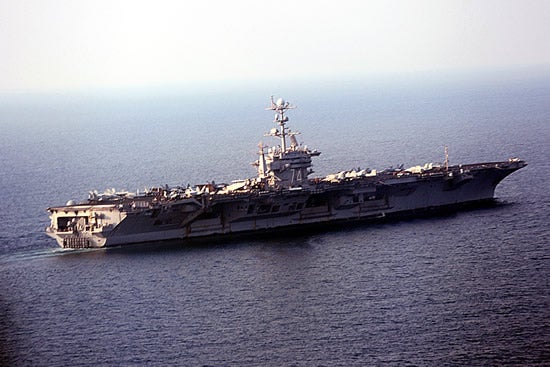As is frequently the case, petroleum futures markets are anxious about political instability in the Middle East. Of particular concern is the possibility that efforts to counter or eliminate Iran’s nuclear weapons capability will lead Iran to close the Strait of Hormuz, through which passes about one-fifth of the world’s petroleum.
The impact of the strait’s closure and how the U.S. and its allies could respond was the subject of a Heritage Foundation Report in 2008 and a recent Special IHS Webcast (may require subscription).
Modeling roughly similar scenarios, the two exercises offer similar lessons:
- The Strait of Hormuz is a critical oil-supply bottleneck,
- Iran probably has the capacity to significantly reduce the flow of petroleum,
- Petroleum prices would approximately double while a blockade is in effect, and
- The impacts on income, employment, and petroleum prices would linger beyond the period of a blockade.
The shipping lanes through the Strait of Hormuz are about six miles wide. With fast attack boats, anti-ship missiles, and mines, Iran has the capability to disrupt nearly all tanker traffic through the strait for weeks or perhaps months. An aggressive allied military response is necessary to limit the disruption.
Even limiting the disruption to weeks can have major international macroeconomic impacts. Of course, the longer the strait is closed, the greater will be the negative economic impacts.
In the Heritage analysis, the closure of the strait could more than double the price of crude oil, reduce national income by hundreds of billions of dollars, and eliminate over 1 million jobs.
In the IHS scenario, oil transportation and production makes full recovery more quickly than in the Heritage scenario. As a result, the economic impacts are less severe, though GDP still drops by over $100 billion for the first year and petroleum prices reach record levels—in excess of $200 per barrel.
In both scenarios, the impacts on petroleum prices—and associated macroeconomic impacts—would be buffered by a coordinated release of worldwide strategic petroleum reserves. Further, both studies showed that there were no significant economic impacts that lasted more than two years.
